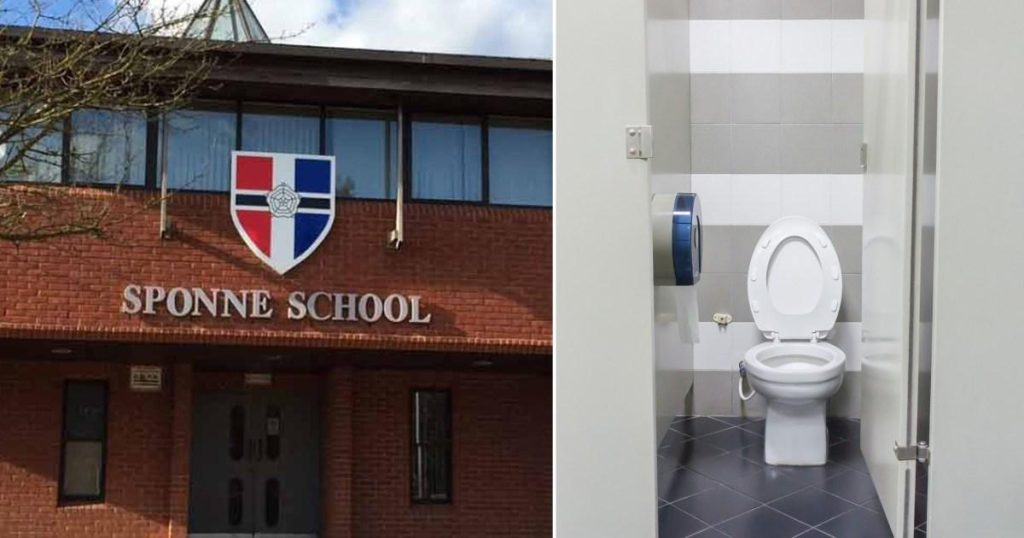The implementation of CCTV cameras within student restrooms at Sponne School in Towcester, Northamptonshire, has ignited a firestorm of controversy, pitting the school’s administration against concerned parents and raising complex questions about privacy, security, and the effectiveness of such measures. Headteacher Graham Forbes justified the installation by citing persistent issues with antisocial behavior, vandalism, vaping, and bullying within the restrooms. He emphasized that the cameras are primarily intended as a deterrent and a tool to facilitate swift intervention by school staff. While the school assures that sensitive areas within the restrooms, such as stalls and urinals, are digitally obscured, this concession has done little to assuage the anxieties of numerous parents who argue that the cameras create an environment of discomfort and undermine student privacy. This incident highlights the delicate balance schools must strike between maintaining order and respecting student rights.
The core of the parental dissent lies in the perceived intrusion on student privacy. Many parents, like Simon, whose child attends Sponne School, express concerns that the constant surveillance within the restrooms creates a chilling effect, making students feel uncomfortable and potentially exacerbating existing issues. They argue that the presence of cameras, even with blurring technology, erodes the sense of personal space and privacy that students should be entitled to within a school environment. This discomfort, they fear, could lead to students avoiding restroom use altogether, potentially creating health and hygiene problems. Moreover, some parents question the proportionality of the response, suggesting that the school’s administration has opted for a heavy-handed approach without fully exploring alternative solutions to address the underlying issues of antisocial behavior.
Sponne School is not alone in facing backlash for implementing CCTV surveillance in student restrooms. Similar controversies have erupted at other schools across the UK, further highlighting the widespread unease surrounding this practice. At a school in County Durham, parents expressed similar outrage, criticizing the lack of consultation and questioning the efficacy of the cameras in addressing bullying. They proposed alternative solutions, such as monitoring the entrances and exits of restrooms, to identify perpetrators without invading students’ privacy within the facilities themselves. These recurring incidents suggest a growing trend towards heightened security measures in schools, often at the expense of student privacy and comfort.
The security of the recorded footage is another significant concern raised by parents and privacy advocates. The possibility of unauthorized access to the camera feeds by malicious actors presents a grave risk, potentially exposing sensitive images of minors to exploitation. The fear of hacking and the subsequent dissemination of private footage underscores the vulnerability of digitally stored information and the need for robust security protocols. This concern is not merely hypothetical; there have been documented cases of school surveillance systems being compromised, leading to the release of sensitive student data. Such incidents underscore the importance of rigorous security measures and the potential consequences of inadequate data protection.
The case of Summerhill School in Kingswinford, Dudley, provides a stark example of the potential legal ramifications of improperly implemented CCTV surveillance in schools. The school initially blamed contractors for installing the cameras within the restrooms, claiming it was a mistake. However, an investigation by the Information Commissioner’s Office (ICO) led to an order for the cameras’ removal. The ICO emphasized the need for strict adherence to data protection laws, particularly when dealing with children, and stressed that the use of cameras in toilet areas should only be considered in exceptional circumstances. This incident serves as a cautionary tale for schools considering similar measures, emphasizing the importance of thorough assessments, consultations, and adherence to legal guidelines.
The ongoing debate surrounding the use of CCTV in school restrooms highlights the complex interplay between safety, privacy, and the rights of students. While schools have a legitimate interest in maintaining order and addressing issues like bullying and vandalism, their methods must be proportionate, transparent, and respectful of student privacy. The strong reactions from parents at Sponne School and other institutions demonstrate the importance of open communication and collaboration between schools and the communities they serve. Moving forward, schools must prioritize comprehensive assessments of the potential impact of surveillance technologies, explore alternative solutions, and engage in meaningful dialogue with parents and students to ensure that security measures do not come at the cost of fundamental rights and freedoms. The development of clear guidelines and best practices, in consultation with privacy experts and stakeholders, is essential to navigate this complex and evolving landscape.




